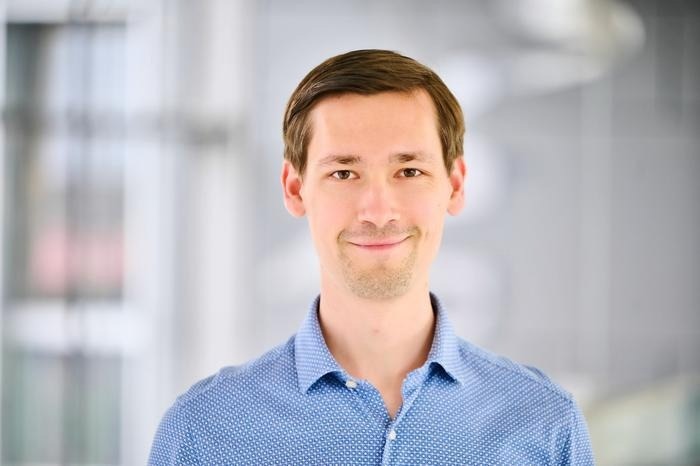Human lives revolve around spatial navigation and spatial memory. Without these skills, it would be extremely difficult to remember the past and to navigate the environment. But understanding the neural underpinnings of spatial memory is still quite incomplete.
 Prof. Dr rer. nat. Dr med. Lukas Kunz, Research Group Leader for Cognitive and Translational Neuroscience at the Clinic and Polyclinic for Epileptology at the University Hospital Bonn (UKB). Image Credit: Bonn University Hospital (UKB)
Prof. Dr rer. nat. Dr med. Lukas Kunz, Research Group Leader for Cognitive and Translational Neuroscience at the Clinic and Polyclinic for Epileptology at the University Hospital Bonn (UKB). Image Credit: Bonn University Hospital (UKB)
New insights into this knowledge gap have been acquired by a research group headed by Professor Lukas Kunz, who joined the University Hospital Bonn (UKB). He found, along with researchers in Freiburg and New York, that brain waves (or "ripples") cause many nerve cell types to fire in unison during spatial memory. The journal Nature Neuroscience published their findings.
Associative memory enables the linking of disparate elements of information.
In the context of spatial memory, associative memory enables us to remember the locations of certain objects in the spatial environment, For example, we can remember where in the house we put our keys.”
Lukas Kunz, Professor, Department of Epileptology, University Hospital Bonn
Kunz is a research group leader for Cognitive and Translational Neuroscience at the Department of Epileptology at the University Hospital Bonn. He is also a member of the Transdisciplinary Research Area (TRA) "Life & Health" at the University of Bonn.
However, this ability diminishes with age or with specific disorders like Alzheimer's. “It is therefore important to investigate the neuronal basis of different forms of human memory,” said Kunz. In the long-term, this might aid in the creation of fresh treatments for memory problems.
Nerve Cells Play an Important Role in Associative Memory
While information is being recovered from memory, nerve cells are firing. To learn more about this phenomenon, the researchers observed how individual nerve cells behaved when patients with epilepsy performed a memory exercise.
Kunz explained, “In a virtual world, the participants were asked to remember the locations of different objects.”
The recordings demonstrated that throughout this memory test, various types of nerve cells became active. Certain things triggered the activation of certain nerve cells, whereas specific places triggered the activation of other nerve cells.
When participants recalled the correct object in the proper location, the scientists noticed that interactions between the various types of nerve cells grew stronger with time.
Brain Waves Coordinate the Nerve Cells
Apart from the neurons associated with place and object, the researchers noticed "ripples" in the hippocampus brain waves that transpired throughout the memory exercise, which are likely to be very important for the creation and retrieval of associative memories.
Ripples could be important for the connection of different types of nerve cells and the formation of complex memories. It will be exciting to further investigate this idea in future studies.”
Lukas Kunz, Professor, Department of Epileptology, University Hospital Bonn
To better understand the causal significance of ripples, it will be fascinating to investigate how memory performance is affected when ripples are suppressed or triggered.
Professor Kunz plans to carry out the research he and his colleagues at the University of Freiburg at the University Hospital Bonn and the Columbia University's School of Engineering and Applied Science in New York have begun.
The Department of Epileptology at the UKB is well-known for its excellent brain research. The department has the unique opportunity to record the activity of individual nerve cells in the human brain in the video EEG monitoring unit, which is the heart of every epilepsy center. This provides exciting insights into the functioning of the human brain, which is only possible at a few research centers worldwide.”
Lukas Kunz, Professor, Department of Epileptology, University Hospital Bonn
He builds on his close collaboration with medical professionals and other researchers in his multidisciplinary work, as this is crucial to the generation of novel research concepts.
Source:
Journal reference:
Kunz, L., et.al. (2024). Ripple-locked coactivity of stimulus-specific neurons and human associative memory. Nature Neuroscience. doi.org/10.1038/s41593-023-01550-x